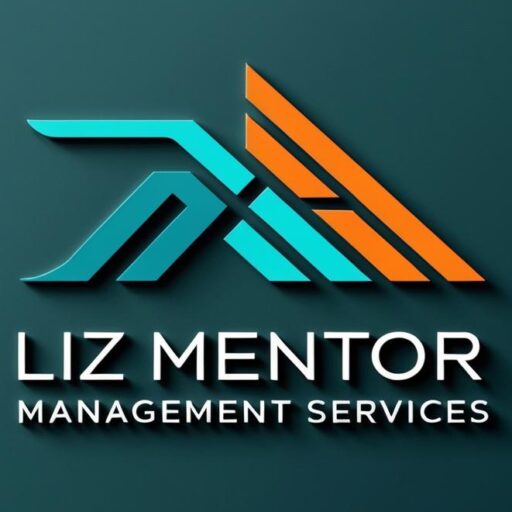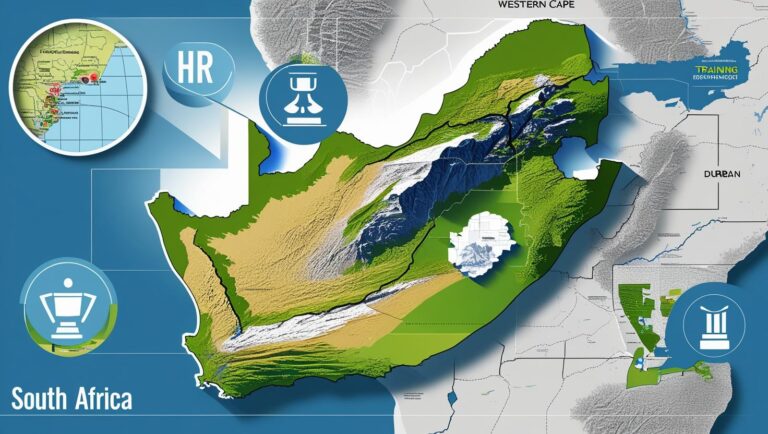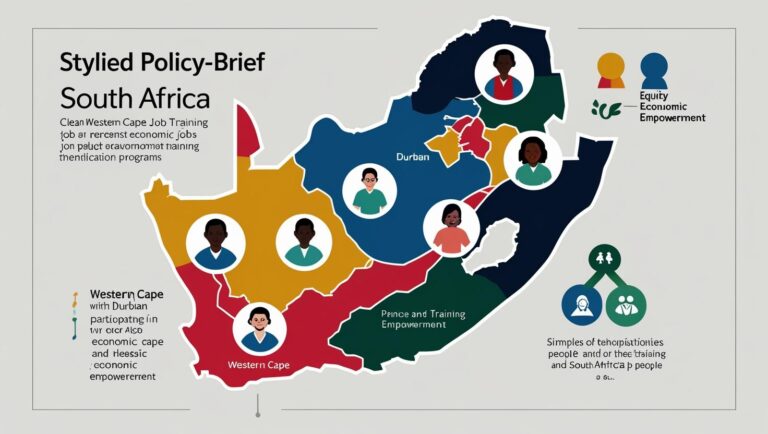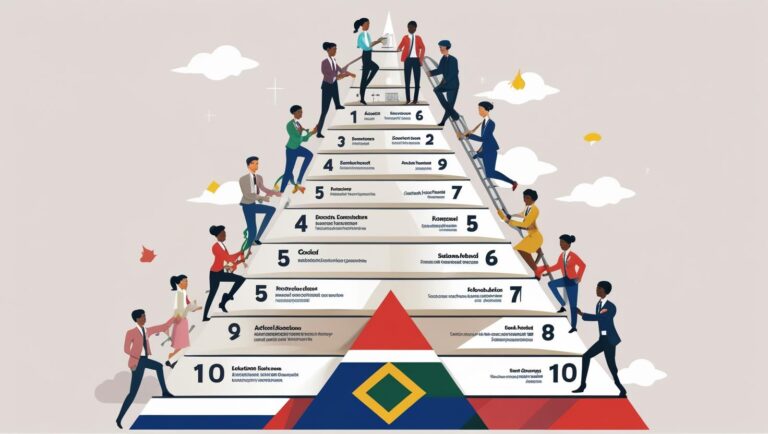Where EE, BBBEE, and the SDF Function Actually Intersect (And Where They Don’t)
If you’ve ever felt confused by Employment Equity (EE), Broad-Based Black Economic Empowerment (BBBEE), and the Skills Development Facilitator (SDF) function, you are far from alone. Small businesses often hear about these frameworks and immediately assume that skills development is all about “earning points.” The reality is much richer and far more empowering. When understood correctly, these elements are tools to build capability, future-proof your business, and create meaningful opportunities for your team — not just checkboxes to please auditors.
In this article, we’ll explore where EE, BBBEE, and the SDF function actually intersect, where they don’t, and how small and medium-sized businesses can align training and development for real impact. By the end, you’ll see how thinking strategically about skills development can transform your business from a compliance-focused organization into one that invests in its people, productivity, and growth.
The Basics: Who’s Who in the System
Before we dive deeper, it helps to clarify the roles and purposes of EE, BBBEE, and the SDF. Understanding the distinctions is key to avoiding common misconceptions that often lead to wasted effort, irrelevant training, and unengaged learners.
Employment Equity (EE)
Employment Equity is about representation. Its focus is on ensuring fair opportunities across race, gender, and disability. EE is generally applicable to employers with 50 or more employees, or those exceeding certain turnover thresholds.
The EE Plan is the key tool here. It tracks recruitment, promotions, and skills development for designated groups, and ensures that workplaces reflect South Africa’s diversity objectives. In essence, EE is about making sure that historically disadvantaged groups are represented and have opportunities to progress.
Broad-Based Black Economic Empowerment (BBBEE)
Where EE focuses on workforce demographics, BBBEE is broader. It seeks to redress historical economic imbalances and enable wider participation in the economy. Businesses seeking government contracts or corporate partnerships usually need to comply with BBBEE standards.
The BBBEE Scorecard measures performance across several areas, including ownership, management control, enterprise development, and skills development. In the context of training, BBBEE tracks measurable spend on developing black South Africans, ensuring that learning initiatives contribute toward empowerment objectives.
Skills Development Facilitator (SDF)
The SDF is the bridge between business needs and compliance frameworks. Appointed by the employer, the SDF coordinates workplace skills development and manages SETA submissions, primarily through the Workplace Skills Plan (WSP) and Annual Training Report (ATR).
While EE and BBBEE provide frameworks and reporting mechanisms, the SDF ensures that actual training initiatives are operationally aligned, fit-for-purpose, and properly documented. A competent SDF translates business needs into actionable, reportable skills development.
Where EE, BBBEE, and the SDF Function Intersect
At first glance, it can appear that these three frameworks overlap entirely. Skills development appears in EE, BBBEE, and SDF responsibilities, which can make small business owners think that training is purely a compliance task.
The reality is more nuanced. All three elements touch training, but their objectives differ. Understanding these distinctions is critical if you want to build a training strategy that serves your business rather than simply filling spreadsheets.
EE emphasizes representation and upskilling for designated groups. Training supports affirmative action goals by equipping underrepresented employees with new capabilities that allow them to progress within the organization.
BBBEE, on the other hand, is focused on measurable spend and reporting. Your training initiatives count toward the scorecard if they meet the criteria for developing black South Africans, but points themselves are not a strategy — they are a measurement tool.
The SDF sits at the intersection of these frameworks. Their focus is on real, business-aligned skills development and ensuring accurate reporting through the WSP and ATR. In other words, the SDF coordinates training that grows your people and ensures it is captured correctly for compliance purposes.
The intersection, then, is not about points. It is about where authentic, business-focused training aligns with the reporting requirements of EE and BBBEE, and where the SDF ensures it is documented and recognized.
Common Pitfalls: When Training Is Driven by Points
A frequent mistake is designing training purely to “tick boxes” for EE or BBBEE. You may hear statements like, “We need to train six black female employees to earn points.” This is a red flag.
When points dictate your training, the outcomes are predictable: the content is often irrelevant to operational needs, learners are disengaged, and budgets are wasted. Employees may attend sessions to satisfy compliance, but the skills often fail to stick, and your business continues to operate with the same gaps.
The problem isn’t the frameworks themselves. The problem is using them as planning tools instead of reporting tools. EE and BBBEE frameworks are designed to measure progress, not to dictate where resources and training time should go.
Planning Training With Purpose
The alternative — and more effective — approach is to plan training based on your business needs first, then use EE and BBBEE frameworks to capture and report these interventions.
Start by asking questions like:
Where are our operational bottlenecks?
Which teams need upskilling over the next 12 months?
Which roles are critical for future growth, and what skills will ensure continuity?
How can we close capability gaps before they impact service delivery or client satisfaction?
Once you know what your business truly needs, you can identify which training activities naturally align with EE and BBBEE requirements. For instance, if a customer service team requires advanced communication training, it may also contribute points toward BBBEE skills development if participants include black South Africans. Similarly, if a designated group is upskilled through relevant interventions, you can reflect this in your EE plan.
This approach transforms training from a compliance exercise into a strategic investment in people, productivity, and future growth.
The Strategic Role of the SDF
A skilled SDF is much more than an administrative tick-boxer. They are a translator between operational needs and compliance requirements. A strategic SDF identifies real skills gaps through audits and consultations, coordinates practical interventions, documents them for SETA purposes, and educates leadership on alignment with EE and BBBEE scorecards.
Consider a manufacturing business with multiple departments. The SDF might identify that machine operators require advanced safety and maintenance training. This is primarily a business need. However, if some participants belong to designated groups, the SDF ensures the training also contributes to EE reporting. Meanwhile, the cost of training contributes to BBBEE skills development spend.
This is how the SDF function ensures that real skills growth is recognized, not manufactured for points.
Aligning Training Without Losing Focus
Smart businesses know how to bridge the gap between compliance and operational growth. The approach is simple, intentional, and sustainable.
First, start with business needs. Your WSP should reflect real skill gaps, project demands, and growth opportunities. When training addresses genuine operational challenges, it becomes relevant, engaging, and effective.
Second, tag opportunities that also satisfy EE and BBBEE requirements. Not every business need will map to compliance, and that’s okay. Focus on authentic alignment rather than forcing participation to chase points.
Third, educate internal teams. HR, finance, and leadership often focus on scorecards without understanding the operational value of training. Clarifying how skills development drives productivity, retention, and client satisfaction creates buy-in and strengthens reporting accuracy.
Finally, document strategically. Keep detailed records of training topics, participants, outcomes, and assessments. A single source of truth simplifies ATR submissions, EE reporting, and BEE claims while reinforcing that training is purposeful, not performative.
Examples in Practice
To make this more concrete, let’s look at how small and medium-sized businesses apply these principles.
Example 1: A Small Logistics Company
A company noticed delays in order processing. The SDF conducted a skills audit and identified that warehouse staff needed training on inventory management software. The training plan was driven by operational needs. However, several participants were from designated groups, and the company’s investment counted toward BBBEE skills development. EE reports reflected the upskilling of the designated employees. Result: improved efficiency, higher staff engagement, and compliance captured naturally.
Example 2: A Marketing Agency
The agency wanted to improve content quality and client reporting. Junior employees, including black South Africans, received targeted training in copywriting and analytics. The SDF coordinated WSP and ATR submissions. Skills development drove operational improvements, boosted client satisfaction, and contributed positively to the BBBEE scorecard.
Example 3: A Manufacturing Plant
The plant needed to improve machine safety practices. A training program was rolled out for all operators, including employees from designated groups. EE reporting showed upskilling of these groups, BBBEE spend was documented, and the SDF ensured WSP alignment. The result: fewer incidents, enhanced employee confidence, and accurate reporting across frameworks.
The Bottom Line
Understanding where EE, BBBEE, and the SDF function intersect — and where they don’t — is essential for any business serious about skills development. These frameworks are not competing systems; they are complementary reporting tools. Planning should always start with real business needs, and compliance should follow naturally.
When you approach skills development this way, the benefits extend far beyond points and reports. You create:
Higher staff retention
Faster, smarter promotions
More effective, engaged teams
Improved client satisfaction
More accurate and defensible SETA submissions
Stronger and credible BEE scores
In other words, skills development becomes a strategic driver of growth, not just a paperwork exercise.
EE and BBBEE provide structure and accountability, while the SDF ensures that the training is meaningful, operationally aligned, and properly documented. When all three work in harmony, businesses stop chasing points and start building skills that truly matter.
Final Thought
Skills development is not a compliance headache — it’s a growth opportunity. When EE, BBBEE, and the SDF function intersect intentionally, you don’t just meet legal or scorecard requirements; you create tangible value for your team and your business.
Train with purpose. Report honestly. Build something real.



